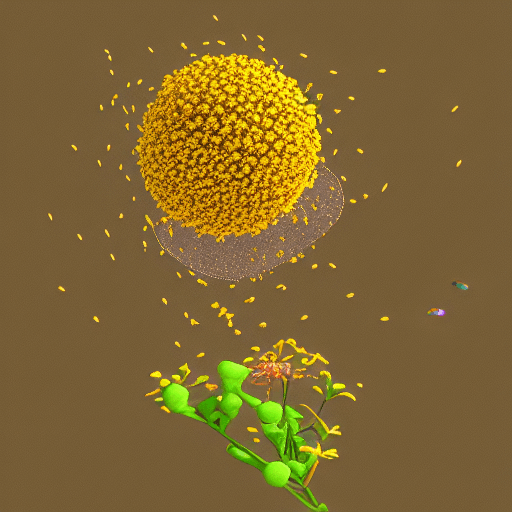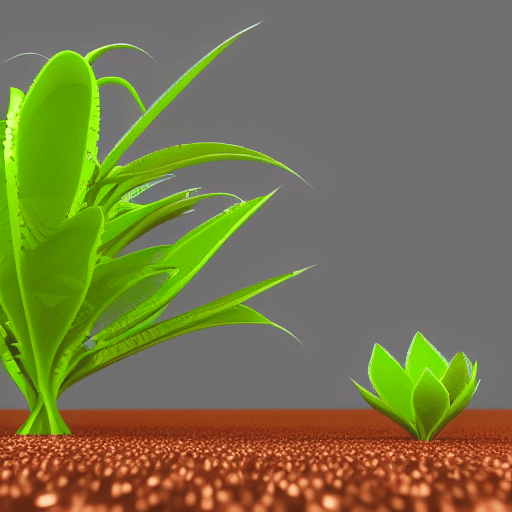Pollination vs Fertilization? …is there any difference?
Yes!
Pollination and fertilization are two important processes that occur in plants, but how do these two processes differ from each other?
And are there benefits that they provide for plants?
Lots of questions, let’s get into how the process of pollination is different from fertilization.

Pollination is the transfer of pollen from the male anther of a flower to the female stigma of a flower while fertilization is the fusion of a sperm cell from the pollen with an egg cell in the ovary of a flower.
Pollination is necessary for fertilization to take place, but fertilization can occur without pollination.
For example, if a bee collects nectar from one flower and visits another flower before transferring pollen to that second flower, then fertilization will take place in that second flower even though pollination did not take place between those two flowers.
How is the process of pollination different from fertilization?
Pollination is the process by which pollen is transferred from the male organs (anthers) of a flower to the female organs (stigma). This process is necessary for the plant to produce seeds.
Fertilization, on the other hand, is the process by which the male gamete (pollen) combines with the female gamete (ovule) to form a zygote. This process occurs inside the ovary of the flower.
While pollination is necessary for fertilization to take place, they are two distinct processes.
What is pollination and how does it work

Pollination is the process by which pollen is transferred from the male reproductive organs of a plant to the female reproductive organs.
This transfer can be done by wind, water, or animals, but most plants rely on animals for pollination.
- When an animal brushes against a flower, the pollen sticks to its fur or feathers.
- The animal then brushes against another flower, transferring the pollen and allowing the plant to reproduce.
- Some plants have evolved to produce nectar as a way to attract pollinators.
- Nectar is a sugary liquid that provides food for animals such as bees and butterflies.
- In return for the nectar, these animals help to spread pollen from one flower to another.
Pollination is essential for the survival of many plant species, and it helps to ensure that fruits and vegetables are able to grow and mature. Without pollination, we would not have many of the foods that we enjoy today.
What is fertilization and how does it work

Fertilization is the process of adding nutrients to the soil in order to promote plant growth.
Plants need a variety of different nutrients, including nitrogen, phosphorus, and potassium, in order to survive and thrive.
These nutrients can be found naturally in the environment, but they are often depleted by human activity, such as agriculture and urban development.
Fertilization helps to replenish these essential nutrients, allowing plants to grow and flourish.
There are a variety of different methods of fertilization, including using commercial fertilizers, composting, and growing cover crops. Each method has its own advantages and disadvantages, and the best method for a particular application will vary depending on the soil type and the plants that are being grown.
No matter which method is used, though, fertilization is an important part of ensuring that plants receive the nutrients they need to grow and prosper.
What are the benefits of pollination and fertilization?

Pollination and fertilization are two important processes in the life cycle of plants.
Pollination vs Fertilization
Pollination occurs when pollen from the male reproductive organ of a plant (the stamen) is transferred to the female reproductive organ (the pistil).
This process allows for sexual reproduction, as the pollen facilitates the fertilization of the plant’s ovules.
As a result, pollination helps to ensure that plants can produce offspring that are genetically diverse and better able to survive in changing conditions.
Fertilization, on the other hand, is the process by which nutrients and water are transported from the roots to the rest of the plant.
This is essential for the plant’s growth and development, as it ensures that the plant has access to all the resources it needs to thrive.
Together, pollination and fertilization are vital for the health and survival of plants.
Examples of how fertilization can occur without pollination
There are several ways that fertilization can occur without pollination.
- One example is self-fertilization, which occurs when a plant produces both male and female reproductive organs and then fertilizes itself. This often happens in flowers that have both pistils and stamens, but it can also occur in other types of plants.
- Another way that fertilization can occur without pollination is by means of parthenogenesis, which is a process that can occur in some species of animals (including bees, wasps, ants, and scorpions) as well as some plants. In parthenogenesis, an egg develops into a new organism without being fertilized by a sperm.
- Finally, some plants (such as ferns) produce spores rather than seeds, and these spores can germinate and grow into new plants without undergoing fertilization.
Thus, there are several different ways that fertilization can occur without pollination.
The importance of processes of pollination and fertilization in plants
Pollination and fertilization are two important processes that allow plants to reproduce.
Pollination occurs when pollen from the male parts of a plant transfer to the female parts of another plant.
This process often occurs with the help of wind or animals like bees.
Once the pollen has reached the female parts of the plant, it can then fertilize the ovules. This process results in the creation of a seed, which will eventually grow into a new plant.
If either pollination or fertilization does not occur, then the plant will not be able to reproduce and will eventually die out. Therefore, these two processes are essential for the survival of plants.
Therefore, the process of fertilization differs from pollination in that fertilization is the process of transferring nutrients from the roots to the rest of the plant, while pollination is the process of transferring pollen from the male reproductive organ to the female reproductive organ.
Both processes are essential for the survival of plants.
Article Sources
Jacks of Science sources the most authoritative, trustworthy, and highly recognized institutions for our article research. Learn more about our Editorial Teams process and diligence in verifying the accuracy of every article we publish.
